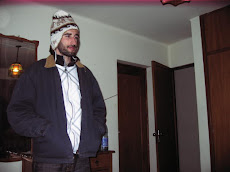Third-grade teachers and newspaper assignment editors have touted this mantra for ages: Write clearly and concisely. Well, someone should have told the guy who wrote the Footprint guide, ¨Cuzco and the Inca Heartland´´ because one vague sentence, coupled with our lack of preparation, made for a rough time getting out of Machu Picchu yesterday. And really, buying the guide (er, borrowing it from someone, technically) should count as preparation, right?
We knew the Peruvian tourism authorities had -- as well they should -- taken an aggressive approach to limiting the visiting hordes´ effect on the spectacular mountaintop ruins of Machu Picchu. So it didn´t surprise us to see notices warning against plastic water bottles at the ruins. Still, Footprint´s advice that backpacks were not allowed past the gate seemed a bit extreme. But we heeded it and left them in our hotel. We drank gallons of water and slathered on sunblock, and filled our pockets with Chapstick, passports, tickets and Peruvian soles. Then we headed to the ATM to take out enough money for a guided tour and more water at the ruins, which, we knew, charged Disney World prices. Oh, and for the bathroom, which cost one Peruvian sole to enter.
Our first roadblock surfaced: the town´s only ATM had broken down. No matter, we pressed on to the bus, which took us up a series of sharp switchbacks to the gate at the top of the mountain. A tip: get the window seat, but try not to look down. Getting a car around a switchback is hard enough, but the bus barely fit on the road, and traffic goes two ways here.
Then our second roadblock surfaced: The concession stand charged us 10 Peruvian soles for a bottle of water. That´s a little less than $4, and, for purposes of comparison, three times what I paid for twice as much water at the last rip-off tourist trap we visited. We had to choose between water and hiring a guide, and we chose water.
Hydrated, we charged up the main stairs to the overlook, a breathtaking vista of an ancient stone citadel against jagged, green peaks. The subtropical humidity recharged our reptilian Florida metabolisms, and with renewed energy we took off up a long, steep fork in the road marked Intipunku. We didn´t know what that meant, since we had left the guidebook in our backpack at the hotel, as per its erroneous instructions.
Intipunku turned out to mean ´Sun Gate´. This is the first glimpse hikers on the Inca Trail have of the ruins, and it is a long, long way off. Oops. I had led us into roadblock No. 3, depleting our energy, leaving us with with no food or water and a long trip back in the afternoon sun.
Still, the Sun Gate was worth the hike, on a shady trail past ancient stonework, past showers of yellow and purple orchids, with the sound of water trickling and rushing somewhere deep in the jungle. And now we can say we approached Machu Picchu as it was meant to be approached, from the Inca Trail. We watched the sun dip lower in the sky behind the mountain Huayna Picchu, the iconic postcard image, as we explored the Sun Temple and its astrological functions; the Condor, massive boulders shaped like a condor in flight; the Sacred Rock; and the still-functioning Inca waterworks, as llamas grazed among them. And because it was the end of the afternoon, we had the world´s most notoriously crowded ruins almost to ourselves.
We noticed something else among the few tourists there: they all had backpacks. Clearly, the policy outlined in the guide was lassiez-faire. We should have at least tried to bring our packs in, we decided, as, shaking, exhausted and dehydrated, we slowly crept down the stairs to the exit. Then we saw the notice posted outside: ¨No backpacks over 20 litres.¨
´´Over 20 litres,¨´ is what I would call an essential clause, if not necessarily in the strict grammatical sense. Damn you, Footprint guide!
Friday, May 9, 2008
Subscribe to:
Post Comments (Atom)


No comments:
Post a Comment